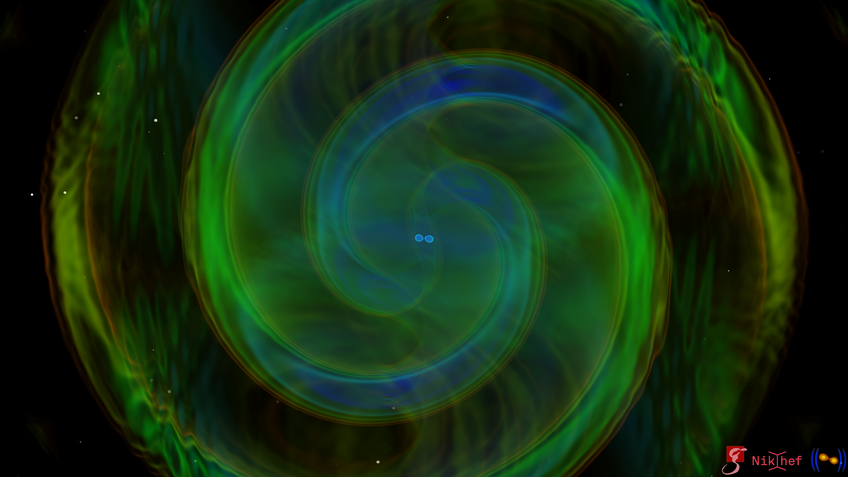
Simulation of the neutron star coalescence GW190425
The animation and the images show a numerical simulation representing the binary neutron star coalescence and merger which resulted in the detected gravitational-wave event GW190425. The two non-spinning neutron stars shown in the animations have 1.72 and 1.63 solar masses and follow the ALF2 equation of state (EOS). The employed parameters (total mass, mass ratio, spin and EOSs) are consistent with the detection made on the 25th of April 2019 by the Advanced LIGO/Virgo detectors.
The animation shows the gravitational wave signal with colors ranging from red, yellow, green, blue with increasing strength, and the density of the neutron stars from light to dark blue ranging between 200 thousand to 600 million tons per cubic centimeter, respectively.
Due to the large total mass of GW190425, the two stars form a black hole shortly after the merger, in contrast to GW170817. In addition, the mass of the ejecta matter and the debris disk mass is significantly smaller than for GW170817, which makes a detection of an electromagnetic counterpart very unlikely and might explain that no electromagnetic follow-up observation has been successfully detected an electromagnetic transient.
We also show the gravitational wave strain in the bottom part of the video, indicating the time evolution.
Note: Publication of these images and movie requires proper credits and written permission. Please contact the AEI press office in advance of publication or for higher-resolution versions.
Credits
Numerical Relativity Simulation: T. Dietrich (Nikhef), W. Tichy (Florida Atlantic University) and the CoRe-collaboration
Scientific Visualization: T. Dietrich (Nikhef), S. Ossokine, A. Buonanno (Max Planck Institute for Gravitational Physics)












